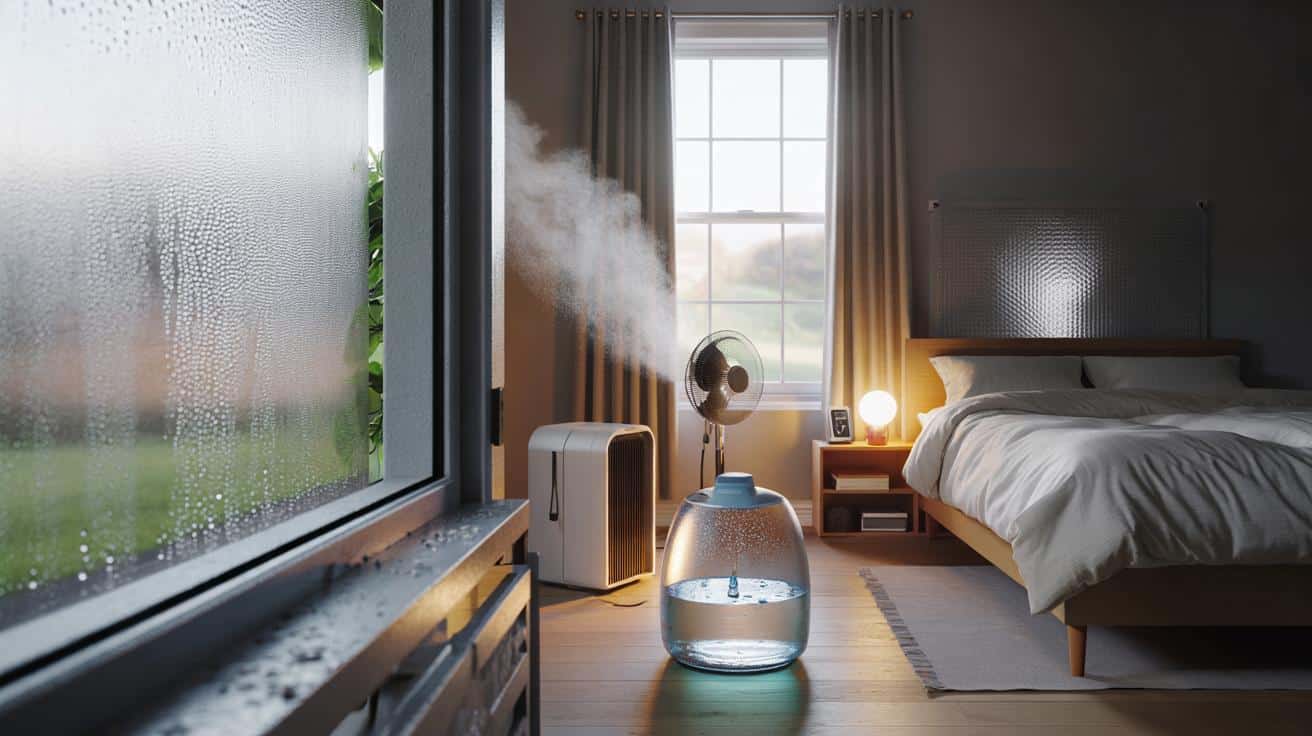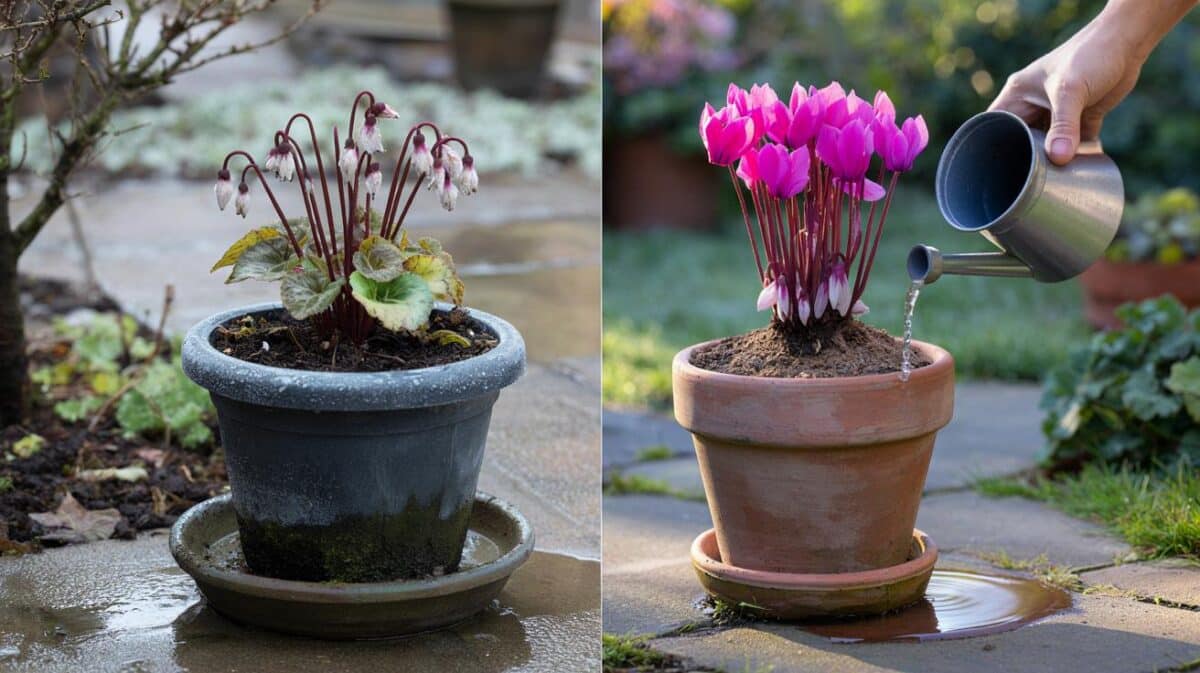The signs feel minor at first. Then the chill clings, and fabrics hold a stale note.
Across Britain, bedrooms are fogging up before breakfast and smelling tired by nightfall. Cleaning crews say a simple, repeatable routine is pushing back—without gadgets you’ll never use or window tricks that fail by Friday.
A quiet bedroom problem grows
A typical pair of sleepers exhales close to one litre of water vapour overnight. Warm air stores that moisture. As the room cools towards dawn, vapour condenses on the coldest surfaces—north-facing walls, metal frames, the pane edge behind heavy curtains. Within days, you spot freckles in the corner or a shadow behind a wardrobe.
The safe zone sits around 50% relative humidity. Above 60%, mould spores begin to settle and spread.
Morning readings tell the story. Many households report 63–70% relative humidity at 7:30am with rooms at 18–20°C. Furniture pressed tight to external walls keeps those surfaces colder than the air, so moisture clings. A slatted bed base blocked by storage boxes traps stagnant pockets beneath the mattress. A radiator hidden behind a thick throw can’t warm the boundary layer.
Condensation’s simple physics
Warm air holds more water. Cool it and it sheds that load. The “dew point” appears first on the coldest, least ventilated spots. That is why a quick five-minute crack of the window can feel fresh but leaves moisture locked inside textiles. You need heat to lift vapour, a draught to throw it out, and a collector to finish the job.
The pros’ 15-7-55 cycle
Flow, heat, capture: that trio shifts a damp room from sticky to steady.
Step by step
- Heat for 15 minutes: bring the bedroom to 19–20°C with the door closed and curtains open.
- Purge for 7 minutes: throw a window wide and open the opposite door to create a straight draught. Aim a small floor fan towards the window to push humid air out.
- Set 55%: close up and run a dehumidifier set to 55% relative humidity to mop up the remainder.
Two details decide success. First, pull wardrobes, chests and the bed 5–7 cm off cold walls to stop cold spots. Second, stop drying clothes in the bedroom. Even a single T‑shirt adds moisture that unpicks your gains.
| Symptom | Probable cause | Quick action |
|---|---|---|
| Morning mist on glass edge | Cold pane and heavy curtains | Open curtains at night by 3–5 cm to warm the pane |
| Corner spots behind wardrobe | Poor air gap on an external wall | Pull furniture back 5–7 cm; add felt pads for spacing |
| Musty bedding smell | Moist air trapped under the mattress | Use a slatted base; keep 10 cm clearance under the bed |
| Blistering paint by ceiling line | High humidity and cold bridge | Run the 15-7-55 cycle; fit insulating film behind radiators |
How often should you run it?
Go hard in week one: three to four cycles. Then settle into twice weekly. Keep a cheap hygrometer on the bedside table and log the morning value for seven days. If you’re still waking over 60%, add one extra cycle, or extend the dehumidifier phase by 30 minutes.
As a rule of thumb, raising room temperature by 1°C trims relative humidity by roughly three percentage points.
Small fixes that add up
- Wardrobes and cupboards: place a calcium chloride absorber inside and replace it when the tray fills.
- Radiators: clear the top, and add a reflective film on external walls to warm surfaces quicker.
- Bedding and flooring: choose a thin rug that dries fast; avoid thick under-bed storage that blocks airflow.
- Cleaning: for early spots, dab with 3% hydrogen peroxide or 70% rubbing alcohol using a clean microfibre cloth. Ventilate while you work and avoid soaking the plaster.
- Trickle air: if your window has a vent, set it ajar overnight. A faint, steady supply stops stagnation.
What changes people notice
Within days, glass clears, fabrics lose that tide-mark smell, and the room feels lighter. You may find sleep less sticky and morning coughs easing. Once textiles stop acting like sponges, the room stabilises between 45% and 55% even on wet weeks. That makes repainting a choice, not a fire fight.
When it might be more than condensation
If you see tide lines, crumbling plaster, or salty blooms on skirting, that suggests penetrating or rising damp rather than bedroom vapour. A 15-7-55 routine won’t cure water ingress. Check gutters, flashing and external cracks, and consider professional assessment if walls feel cold and wet regardless of indoor readings.
Extra guidance
Costs and energy reality
Modern dehumidifiers often draw 200–300 W in normal mode. At a unit rate of 28p/kWh, that’s roughly 5.6–8.4p per hour. Running two hours a day lands between £0.12 and £0.17. Many households save more than that by reducing reheating time and avoiding energy-hungry tumble drying. Use the dehumidifier’s humidistat—once it hits 55%, it should cycle off.
A quick bedroom humidity checklist
- Night target: 17–18°C with a light air path to the window.
- Morning aim: under 55% relative humidity by 9am.
- Weekly routine: two 15-7-55 cycles plus a 10-minute cross-draught after laundry day.
- Bed base: slatted, with at least 10 cm clear beneath.
- Spacing: 5–7 cm gap behind large furniture on external walls.
Want to verify your hygrometer? Seal it in a small container with a cup of damp table salt for eight hours. It should read close to 75% in that stable microclimate. Adjust your expectations accordingly if it’s off by a few points.
For renters, the method still works. Use a portable fan, a small desiccant dehumidifier for wardrobes, and a timed plug for consistency. Note readings in a diary. If values stay above 65% despite regular cycles and mild heating, raise it with your landlord alongside evidence of ventilation attempts and any building defects you observe.








